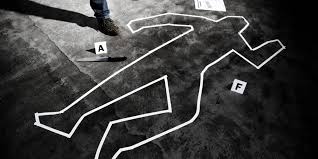Enrolment options
The course deals with the aspects of FORENSIC SCIENCE: covers the meaning, goals, historical development, principles that governs evidences, contribution of forensic science in the investigation of evidences and its potential values that provides to the justice system. It also gives an overview on meanings, aspects and theories of physical evidences. Particularly medico legal aspects of death, blood, body fluids (semen, saliva etc.) toxicological samples, and other physical evidences (like: fingerprints, palm prints, trace samples). This part also touches up on presentation of basic techniques in forensic science, (search and seizure techniques, photography, video graph, taking, preserving, analysis and interpretation of physical evidences) to prove innocence or guilt of a suspect in criminal cases by supplying scientific explanation and interpretation of evidences
In this course, you should be able to:
Ø theories and techniques that can be used to investigate crime causations;
Ø to prevent or reduce crime problems; to promote explanations,
Ø interpretations or justifications of legal practices; and
Explain the relation ship between evidence and crimeUnit One: Concept and Concerns of Forensic Science
· Define and discuss Forensic Science including its goals and importance in the justice system.
· Explain the concerns of the forensic science.
· Familiarize themselves with application of basic science to in forensic science.
· Appreciate how the forensic science applies the basic science for the legal issues and concerns.
The Meaning, Goals and Historical Development Forensic science.
Sub-fields of Forensic science: Forensic psychology Forensic biology, Forensic chemistry. Forensic medicine (pathology, Toxicology), Forensic geology etc---
Protection, investigation and examination of crime scene.
1.3.1 Protecting scene of a crime
Investigation of crime scene
Examination of crime scene
Photographing
Sketching, Videotaping
Collection of physical evidences.
Physical evidences preservation, and analysis
Unit Two: Forensic science and Evidences
Up on completion of this unit, students would be able to:
- List Evidences and principle applied to the evidences analysis.
- Understand the admissibility of evidences.
- Explain the potential uses of forensic (crime) laboratories in explanation of physical evidences.
2.1.Type of physical evidences
2.2. Role of evidences in proving the criminal (suspect)
2.3. The use of forensic laboratories
2.4. Methods applied in evidence analysisUnit Three: Fingerprint and DNA evidences
Up on completion of this unit, students would be able to:
· Explain the meanings, theories and usefulness of fingerprint in identification of an individual.
· List types and principles that govern fingerprint identification.
· Explain about DNA evidence and its potential value in individualization of criminals its application in paternity cases.
· Understand technological developments in fingerprint identification in giving accurate, thorough, timely analysis results for the justice system.
3.1. Meanings, principles and historical developments of fingerprint
3.2. Types and individuality of fingerprint
3.3. DNA and its application in justice system
Unit Four: Ballistics and Trace evidences
Up on completion of this unit, students would be able to:
· Explain the meanings, theories and usefulness of Ballistics in identification of criminals.
· List ballistics evidences and their analysis.
· Explain meanings, theories and usefulness Tracology in investigation of criminals.
· List types of trace evidences.
· 4.1. Ballistics evidences and their application in criminal identification
4.2. Trace evidences identification and analysis.Unit Five. Blood and other Body fluid evidences
Up on completion of this unit, students would be able to:
· Discuss the medicolegl aspects of blood evidence.
· Familiarize them selves with analysis paternity of blood evidence.
· Discuss medicolegl aspects of semen, other body fluids
· Familiarize themselves with the semen analysis of evidences.
5.1.1. Blood as physical evidence
5.1.2. Semen as a physical evidence
Unit Six. Arson and explosive evidences
Up on completion of this unit, students would be able to:
· define arson and explain steps in arson analysis
· Discuss arson evidences in legal aspects.
· Define explosive and its potential Value as an evidences.
6.1. Arson evidences
6.2. Explosives as physical evidences
Unit Seven. Medico legal aspects of Death and Toxicology.
Up on completion of this unit, students would be able to:
· Discuss on medico legal aspects of death.
· Explain about Forensic identification of death.
· Define poisoning and its analysis, results in medico legal aspects
7.1 Medico legal aspects of Death
7.2 Forensic identification of death.
Poisoning and Toxicology
COURSE READINGS
1. Blythe Camnson (2001). Forensic science career (VGM career books)
2. BAJ Fisher (2000). Techniques of crime scene investigation.(6th ed.) CRC press
3. R. Safer stein, Criminalistics: An Introduction to Forensic Science, 2d ed. (Englewood Cliffs, New Jersey: Prentice-Hall, 1981)
4. George Schiro, Crime scene protection. Forensic Scientist, Louisiana State Police Crime Laboratory
5. Taylor’s (1948). Principles and Practice of medical jurisprudence, 10th ed. Vol. I, J and A. Churchill LTD.
6. Taylor’s (1948). Principles and Practice of medical jurisprudence, 10th ed. Vol. II, J and A. Churchill LTD
7. Vernon J. gebert, (1993), Practical Homicide Investigation, Tactics, Procedures and forensic techigues, 2nd, CRC Press.
8. Kirk’s (1998). Crime Investigation.
8.2. RECOMMENDED
1. Frank Lundquist, (1965). Methods of Forensic Science, Volume I, John Wiley and Sons, New York.
2. C.P. Stewart, (1961) Toxicology Mechanism and analytical methods, Volume I, Academic Press.
3. Joe nickell (1996), Forensic Investigation of Documents for Detecting Forgery., University Press of Kentucky.
4. Robert D. Morrison,(1999), Environment Forensic: Principles and Application ,CRC Press, Florida .
5. Barry Levine,(1999). Principles of toxicology, American association for Clinical chemistry.
6. James f. Cowgar, (1993). Friction ridge skin: Comparison and identification of finger print, CRC Press.
7. Mark A. Farley and (et, al. 1990). Forensic DNA technology, Lewis publisher.
8. Steve Jones (19970.In the Blood: God, Genes and Destiny, Harper Collins.

- Teacher: Shunmuga Sundaram